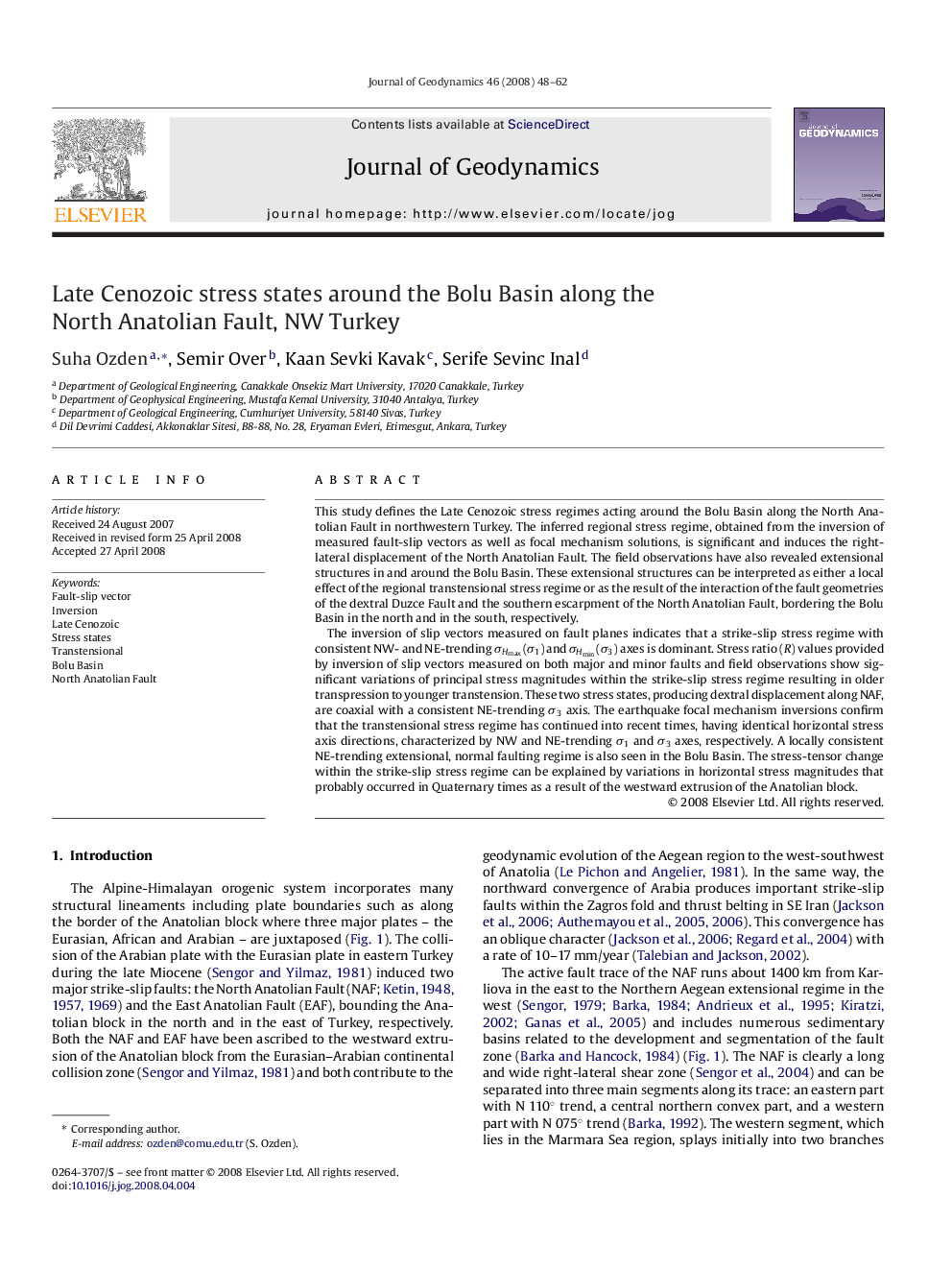| Article ID | Journal | Published Year | Pages | File Type |
|---|---|---|---|---|
| 4688675 | Journal of Geodynamics | 2008 | 15 Pages |
Abstract
The inversion of slip vectors measured on fault planes indicates that a strike-slip stress regime with consistent NW- and NE-trending ÏHmax(Ï1)andÏHmin(Ï3) axes is dominant. Stress ratio (R) values provided by inversion of slip vectors measured on both major and minor faults and field observations show significant variations of principal stress magnitudes within the strike-slip stress regime resulting in older transpression to younger transtension. These two stress states, producing dextral displacement along NAF, are coaxial with a consistent NE-trending Ï3 axis. The earthquake focal mechanism inversions confirm that the transtensional stress regime has continued into recent times, having identical horizontal stress axis directions, characterized by NW and NE-trending Ï1 and Ï3 axes, respectively. A locally consistent NE-trending extensional, normal faulting regime is also seen in the Bolu Basin. The stress-tensor change within the strike-slip stress regime can be explained by variations in horizontal stress magnitudes that probably occurred in Quaternary times as a result of the westward extrusion of the Anatolian block.
Related Topics
Physical Sciences and Engineering
Earth and Planetary Sciences
Earth-Surface Processes
Authors
Suha Ozden, Semir Over, Kaan Sevki Kavak, Serife Sevinc Inal,
